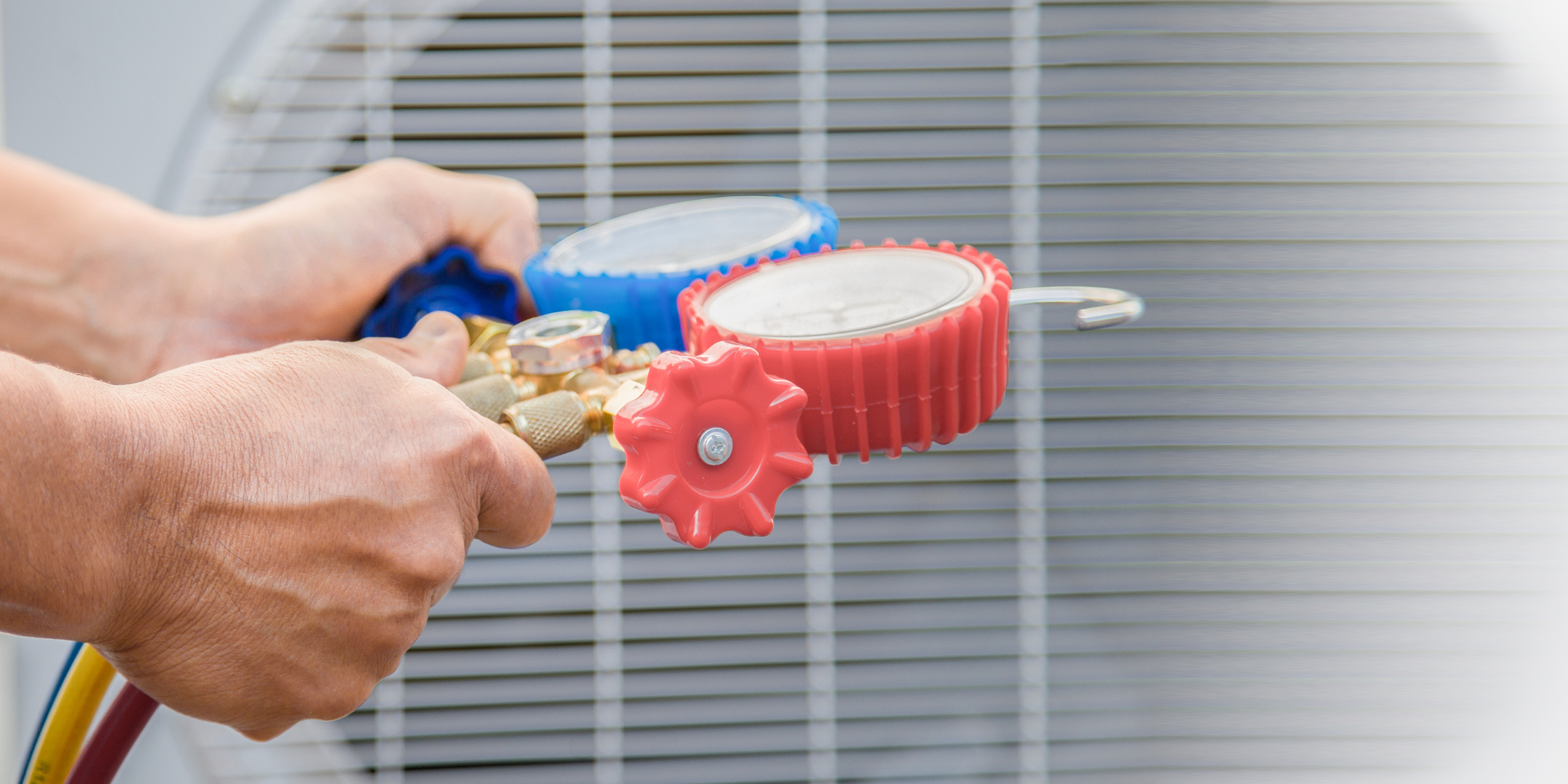What is 454B Refrigerant — and How Does It Compare to R22 and 410A?
April 8th, 2025
4 min read
By Daphne Hunt

So you’ve heard about R-454B — maybe from a contractor, a news article, or an unusually expensive HVAC quote. You’ve probably also heard words like “phase-out,” “regulations,” and “environmentally friendly” thrown around.
HVAC quote. You’ve probably also heard words like “phase-out,” “regulations,” and “environmentally friendly” thrown around.
If you’re like most homeowners, your first thoughts might be:
“Do I have to do something right now?”
“Is my current system going to be obsolete?”
“Can I just refill my system with this new stuff?”
“Will I get in legal trouble if I don’t upgrade my HVAC system from R22?”
“Is this going to cost me a fortune?”
With over 16 years of experience in this industry, we’ve helped many homeowners through this process – you’re not alone in having these concerns and questions.
Let’s walk through what this really means for you — and how to make the most informed, cost-effective decision.
How Refrigerant Works in Your HVAC System
Refrigerant is the chemical compound that makes heating and cooling your home possible. In an HVAC system, it circulates between the indoor and outdoor units, absorbing heat from inside your home and releasing it outside during the cooling process (or vice versa when heating with a heat pump).
HVAC system, it circulates between the indoor and outdoor units, absorbing heat from inside your home and releasing it outside during the cooling process (or vice versa when heating with a heat pump).
Think of it as the engine oil of your HVAC system — you don’t see it, but without it, nothing works.
However, the older refrigerants like R22 and 410A have a high environmental impact when released into the air. That’s why the industry is moving toward newer, cleaner refrigerants like 454B — designed to do the same job with far less harm to the planet.
How Is R-454B Different from Older Refrigerants?
The move to R-454B isn’t just about being trendy or “green.” It’s happening because older refrigerants — specifically R22 and R-410A — either harm the ozone layer or contribute heavily to global warming.
R22 has already been phased out. R-410A started phasing out in 2024 and will soon become harder (and pricier) to find. In other words, it’s not a matter of if these refrigerants disappear — it’s when.
So the industry needed a replacement that:
- Works well in all climates
- Is safer for the environment
- Can be produced affordably and consistently
- Complies with new government rules
That’s where R-454B comes in.
How 454B Compares to R22 and 410A
Let’s break it down in simple terms:
1. Environmental Impact
R22 is terrible for the ozone layer. 410A doesn’t harm the ozone, but has a high global warming potential (GWP). 454B is far better for the environment — with a GWP about 78% lower than 410A.
potential (GWP). 454B is far better for the environment — with a GWP about 78% lower than 410A.
2. Efficiency
Systems using 454B are often built with energy efficiency in mind. This means lower monthly bills and better performance, especially during peak summer and winter months.
3. Availability
R22 is no longer produced. 410A is now being phased out. 454B is the refrigerant of the future — and new systems are being designed to work with it specifically.
Common Hesitations (And Straight Answers)
1. “My system works fine. Why replace it?”
Totally fair.
But if your system uses R22 or 410A, you could face serious costs the next time it needs service. The refrigerant alone can cost hundreds — sometimes over $1,000. Not to mention, systems using these refrigerants may not meet future building codes or energy standards.
2. “Can’t I just put the new refrigerant in my current unit?”
Short answer: No — and doing so can seriously damage your system.
More on that below.
3. “Is R-454B safe?”
Yes. While it’s technically classified as “mildly flammable” (so is cooking oil, by the way), modern HVAC systems are engineered with built-in safety features. It meets all EPA and industry safety requirements.
4. “What’s the cost?”
A full system replacement can range from $8,000 to $15,000+ depending on your home’s layout and the equipment you choose. But here’s the upside:
- Federal tax credits can reduce your cost by up to $2,000
- State rebates may offer additional savings (especially in Oregon and Washington)
- Manufacturer incentives and financing plans can help spread out payments
- Energy savings from a more efficient system can lower monthly bills
You won’t just be swapping refrigerant — you’re getting a better system overall.
5. “Will I get in legal trouble for using a banned refrigerant?”
No, you won’t get in legal trouble just for owning or using a system that contains a phased-out refrigerant like R22 or 410A.
The regulations are aimed at manufacturers, importers, and service providers — not homeowners.
However, there are a few things you should know:
- You can still legally run your system with R22 or 410A if it’s working. But if it needs a repair that involves adding refrigerant, your technician may not be able to legally recharge it — or it could cost a small fortune because the supply is so limited.
- Technicians must be EPA-certified to handle and dispose of these refrigerants properly. That means fewer techs are willing to work on older systems, and the cost of service continues to rise.
- New systems can no longer be manufactured or installed with phased-out refrigerants, so when your current system dies, you’ll have to replace it with one that uses a modern refrigerant like R-454B.
In short: You’re not breaking the law by running your older system, but from a practical and financial standpoint, it may be smarter (and cheaper) to plan for a replacement before you’re forced to.
Why You Can’t Just Swap Refrigerants in Your Existing System
This is one of the most common questions — and one of the most frustrating answers.
HVAC systems are engineered for specific refrigerants. It’s not just about what fluid goes inside — it’s about:
- Compressor pressure
- Oil compatibility
- Expansion valves
- Refrigerant line design
- Temperature control calibration
Trying to use R-454B in a system built for R22 or 410A can cause leaks, breakdowns, and even void your warranty.
Even if it were technically possible, retrofitting usually ends up costing as much as replacing the system outright — but without the efficiency or reliability of a new unit. So while it’s tempting to hope for a quick fix, it’s not worth the risk or the price tag.
What Should You Do If You’re On the Fence?
If your current system is working and you’re not having issues, that’s great. But if it still uses R22 or 410A, or has needed frequent repairs, it’s time to start planning.
410A, or has needed frequent repairs, it’s time to start planning.
Here’s what smart homeowners are doing:
- Scheduling a free system evaluation to find out what refrigerant they have
- Comparing costs between repair and replacement
- Taking advantage of limited-time rebates and financing before they expire
- Choosing systems built for 454B to avoid surprise costs down the road
And when you do eventually upgrade?
You’re not just getting a new type of refrigerant.
You’re getting better air quality, quieter operation, smarter thermostats, and lower energy bills.
Making the Switch With Confidence
If you started this article feeling unsure about what 454B is or whether it actually matters for your home, you’re not alone. The world of refrigerants isn’t exactly dinner party conversation — until your system stops working, or a quote shows up with a bunch of terms you’ve never heard before.
home, you’re not alone. The world of refrigerants isn’t exactly dinner party conversation — until your system stops working, or a quote shows up with a bunch of terms you’ve never heard before.
Upgrading to a system that uses R-454B isn’t just about being environmentally conscious — it’s about avoiding costly surprises, improving energy efficiency, and future-proofing your home comfort. And while the idea of replacing a system may feel overwhelming, the good news is there are incentives, tax credits, and financing options available to make the process more affordable.
Not sure what refrigerant your system actually uses?
Now that you know why 454B matters, let’s find out what’s in your system.
Learn how to check your HVAC refrigerant type.
Daphne Hunt holds a bachelor's degree in English and Mass Communication and has a lifelong passion for writing. She thrives on using her skills to craft compelling pieces that inform, inspire, and connect with readers.
Topics:


